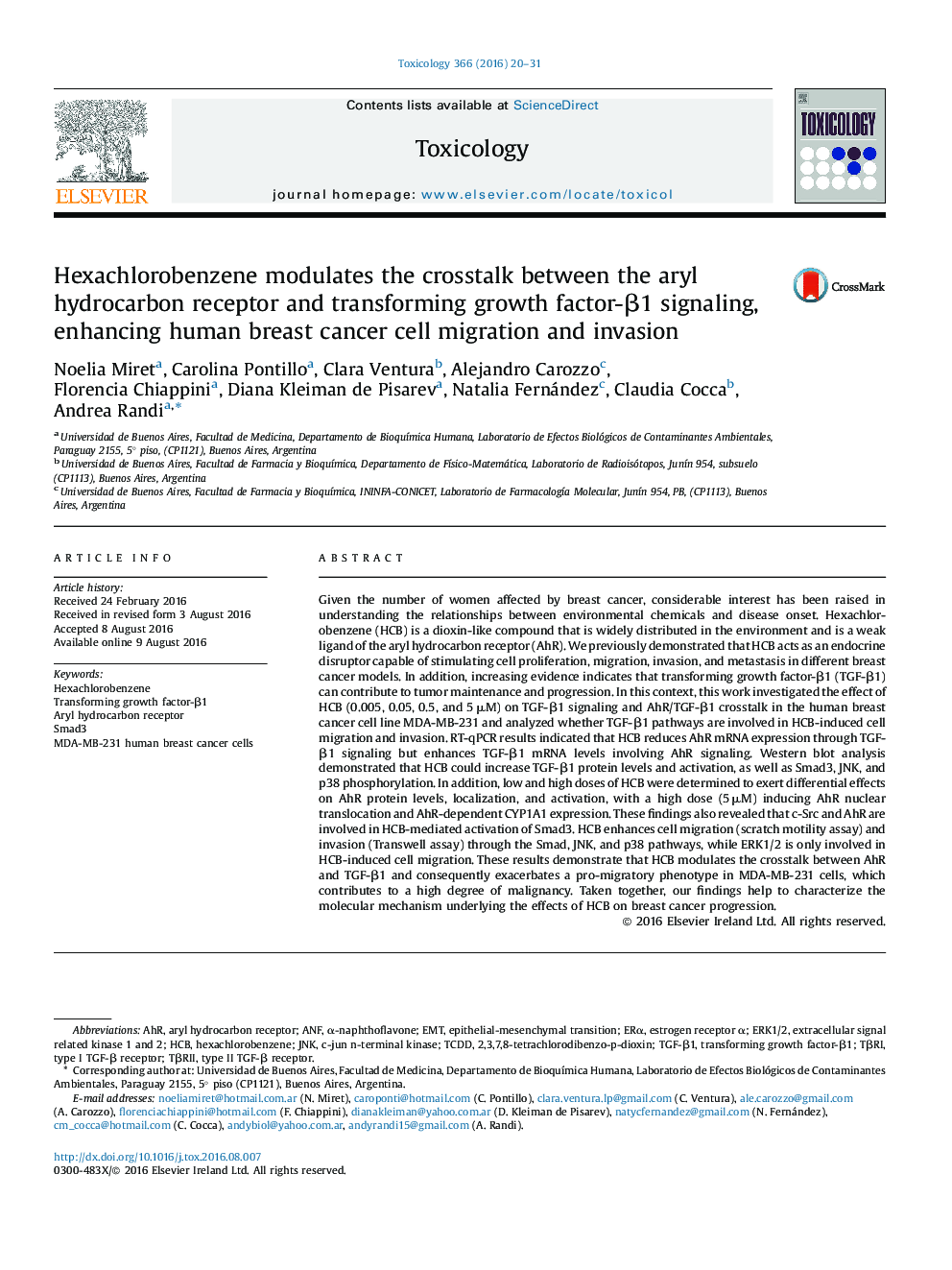| کد مقاله | کد نشریه | سال انتشار | مقاله انگلیسی | نسخه تمام متن |
|---|---|---|---|---|
| 2595396 | 1562304 | 2016 | 12 صفحه PDF | دانلود رایگان |
• HCB enhances TGF-β1 expression and activation levels in breast cancer cells.
• HCB activates TGF-β1 pathways: Smad3, JNK and p38.
• The HCB- induced migration and invasion involves TGF-β1 signaling pathways.
• HCB modulates AhR levels and activation.
• HCB enhances TGF-β1 mRNA expression in an AhR-dependent manner.
Given the number of women affected by breast cancer, considerable interest has been raised in understanding the relationships between environmental chemicals and disease onset. Hexachlorobenzene (HCB) is a dioxin-like compound that is widely distributed in the environment and is a weak ligand of the aryl hydrocarbon receptor (AhR). We previously demonstrated that HCB acts as an endocrine disruptor capable of stimulating cell proliferation, migration, invasion, and metastasis in different breast cancer models. In addition, increasing evidence indicates that transforming growth factor-β1 (TGF-β1) can contribute to tumor maintenance and progression. In this context, this work investigated the effect of HCB (0.005, 0.05, 0.5, and 5 μM) on TGF-β1 signaling and AhR/TGF-β1 crosstalk in the human breast cancer cell line MDA-MB-231 and analyzed whether TGF-β1 pathways are involved in HCB-induced cell migration and invasion. RT-qPCR results indicated that HCB reduces AhR mRNA expression through TGF-β1 signaling but enhances TGF-β1 mRNA levels involving AhR signaling. Western blot analysis demonstrated that HCB could increase TGF-β1 protein levels and activation, as well as Smad3, JNK, and p38 phosphorylation. In addition, low and high doses of HCB were determined to exert differential effects on AhR protein levels, localization, and activation, with a high dose (5 μM) inducing AhR nuclear translocation and AhR-dependent CYP1A1 expression. These findings also revealed that c-Src and AhR are involved in HCB-mediated activation of Smad3. HCB enhances cell migration (scratch motility assay) and invasion (Transwell assay) through the Smad, JNK, and p38 pathways, while ERK1/2 is only involved in HCB-induced cell migration. These results demonstrate that HCB modulates the crosstalk between AhR and TGF-β1 and consequently exacerbates a pro-migratory phenotype in MDA-MB-231 cells, which contributes to a high degree of malignancy. Taken together, our findings help to characterize the molecular mechanism underlying the effects of HCB on breast cancer progression.
Journal: Toxicology - Volumes 366–367, 29 July 2016, Pages 20–31
